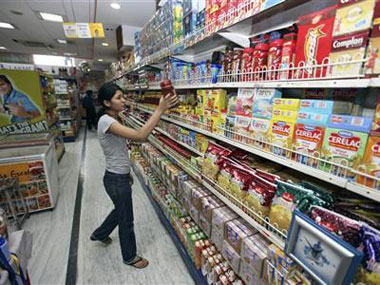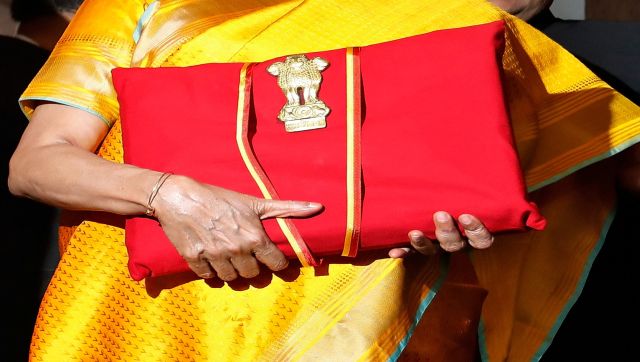Putting rest to concerns whether the 1 July rollout of goods and services tax (GST) is possible, the GST Council finalised rates for various products and services over the last two days. Experts now feel the meeting the deadline will not be an issue, though there are a few more issues to be sorted out.
For various industrial sectors, it is indeed good news that the government has ended the uncertainty surrounding the taxation regime in time. However, not all sectors are happy. So also the tax experts.
Here’s how tax experts and corporates analysed the impact on GST:
Sachin Menon, National Head, Indirect Tax, KPMG in India
Under the given circumstances, GST council has done a commendable job by reducing the impact of GST on the common man and maintaining status co on GST rates on the items largely consumed by the upper middle class. It is like a mini budget short of projection of estimated revenue. It is welcome to see that the education and healthcare sector is out of GST and transportation services is taxed at 5 percent. However, the telecom services at 18 percent may touch the raw nerve of the common man, as that is the only significant service that is used by majority of the population in India.
It seems the GST council belied the expectation of the industry of postponement the GST implementation, by announcing the rates for goods and services. Government seems to be gearing up for the 1 July roll out, despite being fully aware of the dangers of rushing without being fully prepared. This shows its commitment and confidence of wading through teething troubles, that is guaranteed.
Kamal Nandi, Business Head & EVP, Godrej Appliances
We welcome GST as a reform for the industry. We were expecting home appliances to come in the 18 percent tax slab, as these have become a necessity in today’s fast-evolving consumer lifestyle, and in a low penetrated market this would have made appliances more affordable. However, the government has announced a slab of 28 percent for home appliances which will increase prices by approximately twp percent. This uniform tax structure and its consequent ease of doing business will propel growth in the industry.
Suresh Nair, Tax Partner, EY India
With GST rates of 5 percent for identified life saving drugs and 12 percent for other medicines, this announcement is on the expected lines for the Industry. Pharma Companies would focus on ensuring that tax efficiencies under GST regime are effectively captured to negate the increase in effective tax rate. It would be relevant to examine whether the exemption hitherto available for specified APIs (inputs ) used in manufacture of exempted formulations would continue or otherwise. The concern of inverted duty structure is sought to be addressed through the refund provisions. The treatment for area based exemption units would be the next key watch out area for the industry.
Ritesh Agarwal, Founder and CEO, OYO
A lower tax rate for budget hotels sector will ensure that the industry’s quality upgrade continues while delivering standardized accommodation to millions of middle-class travellers. This will also save and create thousands of new jobs which could have been impacted under higher tax-rates. Hotels are the single biggest contributor to tourism industry which accounts for 7.5 percent of the GDP. The move will boost revenue from travel and tourism sector for the next many years. The industry is expected to contribute 280 billion dollars to the GDP by 2026 and will pass on benefits of uniform taxation across the country to travellers."
Pinakiranjan Mishra, Partner and National Leader – Retail and Consumer Products, EY India
The GST rate structure – mostly between the 5-18 percent range – for consumer goods is a welcome move and is expected to decrease costs for the consumer and drive consumption in the country. Mass consumption goods, like hair oil, soaps and toothpaste, are pegged at 18 percent, and will see a drop in price. While white goods are expected to see a slight increase in the overall tax rate, the impact should be marginal. Overall, this is a commendable move for the consumer products sector, and will augur well for the industry.
The Indian Beverage Association
We are extremely disappointed with sweetened aerated water and flavoured water being placed in the highest tax slab rate of 28 percent combined with an additional cess of 12 percent. The effective tax rate of 40 percent on these products under the GST regime is against the stated policy of maintaining parity with the existing weighted average tax which is significantly below 40 percent. This increase will have a negative ripple effect and hurt the entire ecosystem of farmers, retailers, distributors and bottlers in India.
The rationale for the GST regime is to bring about a taxation system that propels the India’s growth story forward and making products more affordable for consumers and benefit society at large. This increase in tax will further limit the growth of the beverage industry. Moreover, the imposition of cess on non-aerated flavoured water and nutrition drinks is not in line with the stated intentions of levying cess only on aerated drinks.
MS Mani, Senior Director, Deloitte Haskins & Sells LLP
The approval of the GST Rules and rates heralds a new beginning of doing organised business in India and the two day meeting of the GST Council has been the most productive and important meeting till date. Significant progress has been made which indicates that we are definitely on course for a July introduction of GST leaving just around six weeks of time for businesses to prepare, get ready and implement the new tax system.
Finalisation of the rates for most of the goods and all the services is a welcome development and all businesses must now be ready for a quick migration.
Having multiple rates for services is a reaffirmation of the fact that the principles used for determining taxation of goods have also been used for services. The basis of taxation continues to be based on the economic affluence of the consuming class.
Most businesses would be able to get significantly more credits under GST, leading to a benefit for most businesses.
Gautam Khattar, Partner - Indirect Tax, PwC
Although the automobile sector is one of the most important contributor to economic growth, it has been facing the whip of increased tax rates and multiple cesses for a substantial time now and even GST doesn’t seem to help much. The Industry doesn’t seem to relish the idea of levying the highest slab rate of 28 percent on all categories of vehicle regardless of the engine capacity or length. Likewise, parts and accessories for such automobile have also been placed in the same bracket of 28 percent.
Over the top, the government seems to have deviated from its earlier stand of introduction of cess only on luxury goods, the current rates indicate a slab (ranging between 1 percent to 15 percent) of cess on all vehicles. Electric vehicles seems to get the required relaxation, surprisingly hybrid vehicles have also been included in the 28% bracket, along with the highest cess of 15 percent. In comparison, tax on electric vehicles has been kept at 12 percent. Given the above rates, industry may not see much tax influence on the price fluctuation for the end customers as the taxes land up in the same bracket as under the current regime.
Saloni Roy, Senior Director, Deloitte Haskins & Sells LLP
On similar lines as for goods, services are to be taxed at 5, 12, 18 and 28 percent and the compensation cess could also apply up to 15 percent. While the rates announced for goods suggest that inflationary pressure shall be avoided it is expected that the rates for services should also be on similar lines. Though there may be a marginal increase in the GST rate on services as compared to the current rate of service tax, with additional credits available in the GST regime to service providers, the hope is that GST on services shall also not lead to inflationary trends. However, service providers are expected to have a more complex compliance environment under GST as compared to the current service tax compliance regime.
Parag Kulkarni, Managing Director, A. O. Smith India Water Product
The introduction of GST is a positive step. It will bring in a systematic approach and enhance transparency which will aid growth of businesses. It will help the industry to concentrate on its core competencies. The new slabs will have a positive impact on the industry. We are confident that it will not only bring relief to the consumers, but will also have a positive impact on the consumer durables segment in the country. GST will help create a single national market and will help improve the competitive positioning of the organized sector. It is a win-win for both the consumer and the manufacturer and we look forward to the exciting times ahead.
Bipin Sapra, Tax Partner, EY India
The multiple rates of services will bring complexity in interpretation and classification leading to tax disputes. While the efficiencies because of GST design will lower the effective tax rate, the overall rates of services are still higher than expected in some categories like luxury hotels, cinema halls and even essential sectors like telecom which has been taxed at 18 percent. With a lot of issues still open in GST law and regarding the GSTN portal, the industry will face difficulties transitioning effectively on 1 July.
Anuj Kapuria, Founder and CEO at Hi-Tech Robotic Systemz
The technology sector has been witnessing off late a major push from the Indian Government, though we need to further strengthen the sector and explore the world of opportunities which lies with automation and artificial intelligence(AI). If India wants to compete globally, proactive measures must be taken from the Government’s end to empower the innovation in technology like - Robotics, AI sector**.**
Priyajit Ghosh, Partner, Indirect Tax, KPMG in India
Taxation of services at multiple slabs would ensure balancing the tax burden based upon the nature of services and maintaining the parity with current rates. A 28 percent rate of tax for luxury hotels, cinema may come as surprise, however, it appears that this will ease the tax burden on certain services such as air travel, cab services and some goods as well. As expected, healthcare and education will continue to remain exempt under the GST regime to maintain the affordability of these basic services. An 18 percent tax on most services would lead to 20 percent hike in services bills on most services including telecommunication.
Pratik Jain, Partner and Leader Indirect Tax, PwC
Having a multiple rate slabs on services comes as a surprise to the industry, particularly introduction of 28 percent slab, which was not envisaged earlier. The proposed tax structure on services is much more complex compared to what we have at present. Also, one was hoping that we would move away from a regime, based on status of service provider and value of service rather than nature of service itself. However, for hotels, restaurant and transportation, distinction has been made on the basis of room tariff, turnover of business and so on. This is not in line with international practice, where a uniform rate is applied on a particular service irrespective of value or status of the business.
A 12 percent rate for works contracts, with full input credit, is an encouraging development as it would be a simpler tax system and should reduce the cash component of the economy. Similarly a 5% rate for transportation, including economy class air travel and cab aggregators is a good move and would ensure that incidence of tax on consumer does not increase for such services.
Harishanker Subramaniam, National Leader, Indirect Tax, EY India
The Council’s decision on services rate structure reflects the logic applied for goods, basically to stay close to current effective rates. This has led to a less than ideal multiple rate structure for services which we hopefully will merge as we go along. Would have liked to see a decision on transition credit provisions specially on the presumptive excise duty credit as this will decide the behaviour of stocking/ unstocking which is critical for the industry. Hopefully, we will have clarity in the 3 June meeting. 1 July implementation now looks imminent so all need to brace up for the last lap in the coming weeks.
Amit Bhagat, Partner - Indirect Tax, PwC
The GST Council has released rates applicable on various goods. As stated by the Government, the tax rates have broadly been decided on the basis of current effective tax cost i.e., combined cost of Central and State indirect taxes on a particular goods category.
Few key rates prescribed by the Council relevant for power sector are as follows: Renewable energy devices and spare parts used for their manufacture would be taxed at 5 percent. Tax structure for coal has been fixed at 5 percent along with cess of Rs. 400 per metric tonnes. The aforesaid lower rates should preserve the overall current indirect tax cost and should not be therefore, negative. It is possible that GST could lower the capital cost for the developers of the power plants as for instance, the incidence of non-creditable CST would be eliminated. Credits would be available to the developers of such plants at all levels, thereby ensuring that there is no tax cascading till the developer level at least. However, tax cost may increase in cases of operations and management of such plants as rate of GST on services could be higher than the current 15 percent service tax. The GST rate on services is also multiple like goods – 5 percent, 12 percent, 18 percent and 28 percent. What rates may apply to which category of service is although still awaited.
No clear exemption has been prescribed as yet for taxation of electricity under GST. It would need to be seen if any exemption notifications would be released by the Government in this regard.
Anita Rastogi, Partner, Indirect Tax, PwC India
A new concept of luxury services has been introduced under GST which is based on the fact that such services can suffer higher tax rate. Also multi-tier rate for services has been considered in line with that of goods. Though the thinking behind this may have a rationale, the fact that now one would have to deal with classification issues is an area of concern.
Uday Pimprikar, Tax Partner, EY India
Imposing 18 percent tax on telecom is likely to increase the overall tax burden and therefore may have a negative impact on the consumers’ expenses. It needs to be appreciated that telecom is a necessity and an extremely important infrastructure service & resource and thus deserves more sensitive treatment.
Gopal Balachandran, Chief Financial Officer, ICICI Lombard
The GST rate for insurance, clubbed with financial services has been announced at 18%. This will increase the incidence of tax for customers from the existing 15% to 18%. Having said this, the industry has also been seeking removal of exemption, for which we await the details in terms of announcement of the exemption list.
Divyesh Lapsiwala, Indirect Tax Partner, EY India
Life Insurance could have been considered as one of the sectors with a benign GST rate given the demographic situation in India and below average penetration of life insurance services.
S Prakash, Senior Executive Director, Star Health and Allied Insurance
Health Insurance is no more a business proposition, it is a social necessity. An attractive GST would have further influenced insurance penetration but the industry is still geared up to take the growth further with rise in life expectancy, per capita income, financial literacy and medical advancement in India.
Joydeep K Roy, Partner and Leader- Insurance, PwC India
GST implementation has to be done sensitively keeping in mind the inherent nature of insurance business. While products like Motor, Health, Term have all the premium categorised as risk premium, savings products like Endowment and ULIP have a large component of consumer savings other than risk premium. Service Tax (without cess) was 14.5% on pure risk products, 3.5% of first year and subsequent 1.75% on Endowment, 14% on ULIP insurer charges which are composite of risk and fund management fees. Similarly GST had to be implemented sensitively on these different categories of products.
Considering the low penetration of insurance in India, Micro Insurance (by regulator definition) or certain instances below a threshold need to be exempt from GST.


)




)
)
)
)
)
)
)
)